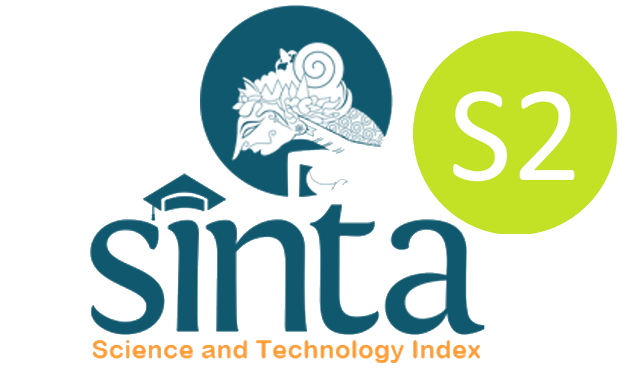Abstract
Accelerated by the COVID-19 pandemic and driven by technological advances as well as changing attitudes toward traditional office environments, the workplace landscape has experienced a rapid shift toward remote work. Regardless of urban employees’ interest in remote work, studies have yet to explore the impact of online presence on employee performance as mediated by workplace well-being. A total of 132 private and government employees completed three questionnaires. The results supported the hypothesis that workplace well-being mediates the effect of online presence on performance. The findings also suggest that employees with stronger online presence tend to have better workplace well-being, which then leads to higher performance levels. These results shed light on the importance of managing online presence in remote work settings. Organizations must recognize the impact of online presence on their employees’ well-being and ultimately their performance by considering policies and their enablers to support presence at the virtual workplace.
References
Arkadia Works & Vinoti Office. (2021, July 28). Workplace preference after pandemic. [White paper]. https://www.arkadiaworks.com/workplace-preference-after-pandemic/
Borup, J., West, R. E., & Graham, C. R. (2012). Improving online social presence through asynchronous video. The Internet and Higher Education, 15(3), 195–203. https://doi.org/10.1016/j.iheduc.2011.11.001
Barrero, J. M., Bloom, N., & Davis, S. J. (2021). Why working from home will stick. Centre of Economic Performance, The London School of Economics and Political Science.
Becker, W. J., Belkin, L. Y., Tuskey, S. E., & Conroy, S. A. (2022). Surviving remotely: How job control and loneliness during a forced shift to remote work impacted employee work behaviors and well‐being. Human Resource Management, 61(4), 449-464. https://doi.org/10.1002/hrm.22102.
Capterra. (2022, March 3). Relationships with co-workers are now the least important factor in job satisfaction, according to a new Capterra survey. https://www.capterra.com/resources/friends-at-work-research/
Castaneda, J. M., Japos, G., & Templonuevo, W. (2022). The effects of hybrid work model on employees and staff’s work productivity: A literature review. JPAIR Multidisciplinary Research, 50(1), 159-178. https://doi.org/10.7719/jpair.v50i1.537
Chang, C-M., & Hsu, M-H. (2016). Understanding the determinants of users’ subjective well-being in social networking sites: An integration of social capital theory and social presence theory. Behaviour & Information Technology, 35(9), 720-729. https://doi.org/10.1080/0144929X.2016.11413
Damayanti, A. (2020, October 19). Nice! Deretan perusahaan ini terapkan WFH permanen. DetikFinance. https://finance.detik.com/berita-ekonomi-bisnis/d-5219215/nice-deretan-perusahaan-ini-terapkan-wfh-permanen
Faul, F., Erdfelder, E., Buchner, A., & Lang, A.-G. (2009). Statistical power analyses using G*Power 3.1: Tests for correlation and regression analyses. Behavior Research Methods, 41(4), 1149-1160. https://doi.org/10.3758/brm.41.4.1149
Grobelny, J., & Tchounwou, P. B. (2023). Factors driving the workplace well-being of individuals from co-located, hybrid, and virtual teams: The role of team type as an environmental factor in the job demand–resources model. International Journal of Environmental Research and Public Health, 20(4), 3685. https://doi.org/10.3390/ijerph20043685
Hafermalz, E., & Riemer, K. (2021). Productive and connected while working from home: What client-facing remote workers can learn from telenurses about ‘belonging through technology’. European Journal of Information Systems, 30(1), 89-99. https://doi.org/10.1080/0960085X.2020.1841572
Haines, R. (2021). Activity awareness, social presence, and motivation in distributed virtual teams. Information & Management, 58(2), 103425. https://doi.org/10.1016/j.im.2020.103425
International Labour Organization. (2022). Working time and work-life balance around the world [White Report]. https://www.ilo.org/wcmsp5/groups/public/---ed_protect/---protrav/---travail/documents/publication/wcms_864222.pdf
Irawanto, D. W., Novianti, K. R., & Roz, K. (2021). Work from home: Measuring satisfaction between work–life balance and work stress during the COVID-19 pandemic in Indonesia. Economies, 9(3), 96. https://doi.org/10.3390/economies9030096
Jaiswal, A., Sengupta, S., Panda, M., Hati, L., Prikshat, V., Patel, P. & Mohyuddin, S. (2024). Teleworking: Role of psychological well-being and technostress in the relationship between trust in management and employee performance. International Journal of Manpower, 45(1), 49-71. https://doi.org/10.1108/IJM-04-2022-0149
Jobstreet. (2020). Global talent survey. https://www.jobstreet.co.id/id/cms/employer/wp-content/themes/jobstreet-employer/assets/pdf/gts/Global_Talent_Survey_2_ID_ID_2.pdf
Junça-Silva, A., Caetano, A., & Lopes, R.R. (2017). Daily uplifts, well-being and performance in organizational settings: The differential mediating roles of affect and work engagement. Journal of Happiness Studies, 18, 591-606, doi:10.1007/S10902-016-9740-2
Khor, L. K., & Tan, C. L. (2023). Workforce management in the post‐pandemic era: Evidence from multinational companies using grounded theory. Global Business and Organizational Excellence, 42(4), 93-104. https://doi.org/10.1002/joe.22174
Koopmans, L., Bernaards, C. M., Hildebrandt, V. H., De Vet, H. C., & Van Der Beek, A. J. (2014). Construct validity of the individual work performance questionnaire. Journal of Occupational and Environmental Medicine, 56(3), 331-337. https://doi.org/10.1097/JOM.0000000000000113
Kreijns, K., Bijker, M., & Weidlich, J. (2020). A Rasch analysis approach to the development and validation of a social presence measure. In M. S. Khine (Ed.), Rasch measurement: Applications in quantitative educational research (pp. 197-221). Springer Singapore.
Kurniasari, M. I., Isbah, M. F., & Azca, M. N. (2022). The emerging workcation trend in Indonesia: A preliminary study on the demographic profiles, motivations, and experiences of workcationers. Jurnal Ilmu Sosial, 21(1), 75-97. https://doi.org/10.14710/jis.21.1.2022.75-97
Mallmann, G. L., & Maçada, A. C. G. (2021). The mediating role of social presence in the relationship between shadow IT usage and individual performance: A social presence theory perspective. Behaviour & Information Technology, 40(4), 427-441. https://doi.org/10.1080/0144929x.2019.1702100
Maulana, F. (2018). Pengaruh workplace well-being terhadap intensi turnover pada karyawan (Undergraduate thesis, University of Muhammadiyah Malang).
Maurer, M., Bach, N., & Oertel, S. (2022). Forced to go virtual: Working-from-home arrangements and their effect on team communication during COVID-19 lockdown. German Journal of Human Resource Management, 36(3), 238–269. https://doi.org/10.1177/239700222210
Oh, C. S., Bailenson, J. N., & Welch, G. F. (2018). A systematic review of social presence: Definition, antecedents, and implications. Frontiers in Robotics & AI, 5(114), 1-35. https://doi.org/10.3389/frobt.2018.00114
Orhan, M. A., Rijsman, J. B., & Van Dijk, G. M. (2016). Invisible, therefore isolated: Comparative effects of team virtuality with task virtuality on workplace isolation and work outcomes. Revista de Psicología del Trabajo y de las Organizaciones, 32(2), 109-122. https://doi.org/10.1016/j.rpto.2016.02.002
Page, K. (2005). Subjective well-being in the workplace [Thesis, School of Psychology Faculty of Health and Behavioral Sciences Deakin University].
Papagiannidis, S., & Marikyan, D. (2020). Smart offices: A productivity and well-being perspective. International Journal of Information Management, 51, 102027. https://doi.org/10.1016/j.ijinfomgt.2019.10.012.
Podsakoff, P. M., MacKenzie, S. B., Lee, J-Y., & N. P. Podsakoff. (2003). Common method biases in behavioral research: A critical review of the literature and recommended remedies. Journal of Applied Psychology, 88(5), 879 –903. https://doi.org/10.1037/0021-9010.88.5.879
Pramudya, A. W. E., Prasetyo, H. B. D., & Wempi, J. A. (2024). Digital nomad work trends in indonesia after the pandemic. International Journal of Science and Society, 6(1), 116-126. https://doi.org/10.54783/ijsoc.v6i1.1000
Pristiyono, Ikhlash, M., Rafika, M., & Hasibuan, D. K. (2020). Implementasi work from home terhadap motivasi dan kinerja dosen di Indonesia. Jurnal Akuntansi, Ekonomi dan Manajemen Bisnis, 8(2), 263-269. https://doi.org/10.30871/jaemb.v8i2.2692
Rachmawati, R., Choirunnisa, U., Pambagyo, Z. A., Syarafina, Y. A., & Ghiffari, R. A. (2021). Work from home and the use of ICT during the COVID-19 pandemic in Indonesia and its impact on cities in the future. Sustainability, 13(12), 6760. https://doi.org/10.3390/ su13126760
Rahmanita, M., Muhardiansyah, D., Waluyo, Adawiyah, R., & Zhu, J. (2022). Work-from-home: Perspectives of employees' work-life balance in Indonesia amid COVID-19 pandemic. in H. Oktadiana, M. Rahmanita, R. Suprina, & P. Junyang (eds.). Current issues in tourism, gastronomy, and tourist destination research: Proceedings of the International Conference on Tourism, Gastronomy, and Tourist Destination (TGDIC 2021. Routledge.
Richardson, J. C., Maeda, Y., Lv, J., & Caskurlu, S. (2017). Social presence in relation to students' satisfaction and learning in the online environment: A meta-analysis. Computers in Human Behavior, 71, 402-417. https://doi.org/10.1016/j.chb.2017.02.001
Schultz, K. S., Whitney, D. J., & Zickar, M. J. (2014). Measurement theory in action: Case studies and exercises (2nd ed.). Routledge
Sutarto, A. P., Wardaningsih, S., & Putri, W. H. (2021). Work from home: Indonesian employees’ mental well-being and productivity during the COVID-19 pandemic. International Journal of Workplace Health Management, 14(4), 386-408. https://doi.org/10.1108/IJWHM-08-2020-0152
Susilo, D. (2020). Revealing the effect of work-from-home on job performance during the COVID-19 crisis: Empirical evidence from Indonesia. The Journal of Contemporary Issues in Business and Government, 26(1), 23-40. https://doi.org/10.47750/cibg.2020.26.01.002
Wang, B., Liu, Y., Qian, J., & Parker, S. K. (2021). Achieving effective remote working during the COVID-19 pandemic: A work design perspective. Applied Psychology: An International Review, 70(1), 16-59. https://doi.org/10.1111/apps.12290
Weiss, H. M., & Cropanzano, R. (1996). Affective events theory: A theoretical discussion of the structure, causes and consequences of affective experiences at work. In B. M. Staw & L. L. Cummings (Eds.), Research in organization behavior: An annual series of analytical essays and critical reviews (pp.1-74). JAI.
Widyastuti, T., & Hidayat, R. (2018). Adaptation of individual work performance questionnaire (IWPQ) into Bahasa Indonesia. International Journal of Research Studies in Psychology, 7(2), 101-112. https://doi.org/10.5861/ijrsp.2018.3020
Yang, J. C., Quadir, B., Chen, N-S., & Miao, Q. (2016). Effects of online presence on learning performance in a blog-based online course. The Internet and Higher Education, 30, 11-20. https://doi.org/10.1016/j.iheduc.2016.04.002
Yen, C. J., & Tu, C. H. (2011). A multiple-group confirmatory factor analysis of the scores for online social presence: Do they measure the same thing across cultural groups?. Journal of Educational Computing Research, 44(2), 219-242. https://doi.org/10.2190/EC.44.2.e
Recommended Citation
Febriawan, Iqbal Maesa
(2024)
"Well Presence, Well Performance: The Effect of Online Presence on Indonesian Remote Employees’ Performance through Workplace Well-Being,"
Psychological Research on Urban Society: Vol. 7:
No.
2, Article 2.
DOI: 10.7454/proust.v7i2.1167
Available at:
https://scholarhub.ui.ac.id/proust/vol7/iss2/2







